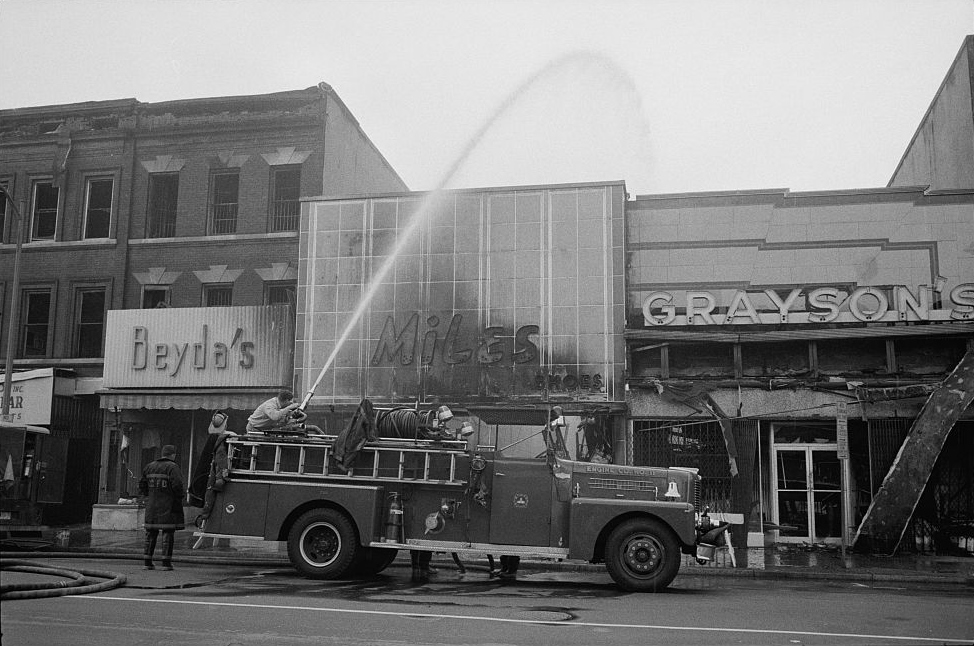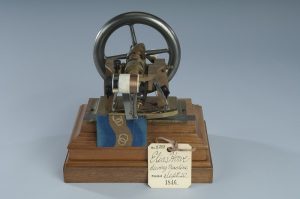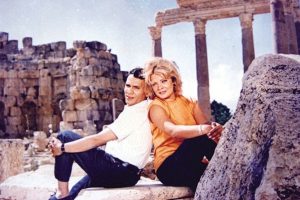Equal Rights has been a topic since the beginning of time. Minorities have always wanted equal treatment. Throughout U.S. history, many people have treated African Americans as lesser by segregating them in churches, schools, buses, restaurants, and many more places. People knew that they must take action if they wanted to make a change. Martin Luther King Jr., a civil rights activist, was a prominent leader in society who publicly spoke out to make changes in the U.S. Due to his choices in publicly supporting the fight for equal rights, his life was not by any means “easy.” For example, angry protestors bombed King’s family home because they did not agree with what he stood for. He was also arrested numerous times including his arrest in one of the most solidly segregated cities in the South — Birmingham, Alabama.1 However, these challenges did not stop him from being public with his cause. He continued to fight for what he believed in when he gave speeches and protesting among the many who believed in his fight. On April 4, 1968, just after 6 PM in Memphis, Tennessee, Martin Luther King Jr. stood on the balcony of the Lorraine Motel just before he was shot in the neck by James Earl Ray. He passed away on the scene.2 The world was outraged.
Once the news was out about MLK’s assassination, people across the country felt anger. Their leader who fought to make this world a better place was assassinated. They decided that each of them had to come together as a voice of their own and continue the legacy Martin Luther King Jr. started during his short life on earth. One way they thought to do so was through riots in cities like Washington D.C.
King was in Washington D.C. during the early months of 1968, because he planned on launching the Poor People’s Campaign. He developed the campaign to bring thousands of impoverished people of all races to the nation’s capital and raise awareness of persistent poverty across America. The Sunday before his assassination, he preached in Washington, “We are not coming to tear up Washington. We are coming to demand that the government address itself to the problem of poverty.”3 The people in Washington D.C. felt a deep connection with Martin Luther King Jr. for he was always visiting their city to fight for advocacy.

As the news broke out about his assassination, crowds gathered at the intersection of 14th and U Streets in Washington D.C.4 Many people walked into businesses and demanded them to close down their stores in honor of King’s life. The riots began at about 9:30 PM when someone shattered the plate glass window of the Peoples Drug Store on U Street. This riot lasted for the course of three days. The outrage spread to the black commercial strips along Seventh Street NW and H Street NE, as well as to black neighborhoods on the Far Southeast. As the riots continued, rioters not only smashed the windows, but they stole from businesses as well. It spiraled out of control, and the police became involved.5 Police officers deployed tear gas as a tactic to disperse the large groups. However, quickly fires started to erupt inside businesses along the streets of downtown.[6. Samuel J. Walker, Most of 14th Street is Gone (New York: Oxford University Press, 2018), 49.]
The riots continued and accomplished nothing but the town’s destruction. Firefighters tried to put out the fires, however, they were met with stones and bottles thrown at them. Walter Fauntroy (a leader of BUF-Black United Front), Ruth Bates Harris, and other black leaders walked the streets encouraging people to put it to rest and go home. Despite encouragement to end active riots, they continued. The police were outnumbered, and it is believed the ratio from the people rioting to police officers to be hundreds to one. Mayor Walter Washington toured Fourteenth Street by car that evening and watched as looters happily clambered through broken store windows with stolen clothes, electronics, and other goods. A black Star reporter, Paul Delaney, who accompanied Washington, wrote, “There was a sort of holiday gaiety about it all, people laughing and talking.”6

The riots lasted all night, the police knew they had to come in prepared that next morning. “That Friday morning, police officers lined the streets of downtown with tear gas and smoke.”7The gases were visible all throughout the city. Despite this chaos, Mayor Washington declared schools and government offices would remain open. He also ordered that the town be cleaned up.
However, at the morning press conference, Stokely Carmichael, a prominent American socialist organizer in the civil rights movement, defiantly called on black residents to arm themselves in preparation for a war of liberation. Washington D.C. did not have official gun restrictions until almost a decade after the riots. Later that afternoon he told the crowd, “We will go out tonight”8 While waving a gun, he called “Don’t loot – shoot.”9 At this point, the riot was dangerously out of hand. President Johnson was called to step in by Mayor Washington. He ordered the National Guard, the Eighty-Second Airborne Division, and the 503rd Military Battalion into the city. As the news broke out about military involvement, many of the people fled the city. However, violence persisted throughout the town with “fires raging unattended, sidewalks heaped with soggy mashed loot, smoke covering all.”10 By dawn on Saturday, the 13,600 federal troops had regained D.C. under their control, and “It was the largest deployment for any riot in the nation’s history.”11

The businesses that were set on fire were not chosen at random. Rioters avoided black-owned businesses, which identified themselves with “Soul Brother” signs in their storefront windows. The 14th and U neighborhood was the center of black activism in the city; the local offices of black leadership groups were clustered there.[13. Samuel J. Walker, Most of 14th Street is Gone (New York: Oxford University Press, 2018), 49.] Ben’s Chili Bowl on U Street stayed open throughout the riots as a center for community activists. Safeway-a grocery chain reviled in the black community since it fiercely fought the New Negro Alliance decades earlier- found its store “particularly hard to hit.”12
Because of all the riots, Mayor Washington set a couple of temporary rules. He banned the sale of alcohol, flammable liquids, and firearms. He also imposed a nightly 5:30 p.m. curfew that remained in effect for one week. The city’s annual Cherry Blossom Festival Parade was cancelled. The effects of the post riots caused 13 people to lose their life during the riot, mostly due from smoke inhalation. More than 900 businesses were either damaged or destroyed. It left roughly 5,000 people jobless. According to the Post, roughly 20,000 people were involved in the rioting and 7,600 people were arrested (primarily for disobeying curfew). Only to be detained and later released for they had no space for all of the people being arrested.13
Despite the outcome of the rioting (arrests, damages to town, deaths, and injuries), the black community defended it and was proud of the stand they took. No one backed down, but instead continued to fight in hopes of being heard. News about the riots spread all across country. African American inhabitants in D.C. felt as though the riots served a useful purpose. Reverend Channing Phillips of the Black United Front argued, “Washington now has the opportunity to rebuild politically, socially, as well as physically.”14 The black community finally felt as though they were heard. From here on out, things could only go up for them since this was rock bottom. It was a brave notion for people to stand up for their rights. Their reasoning for rioting was to be heard. They accomplished this by having people understand that racial profiling is not all right. However, this fight for equality will never stop. By fighting for equality, they are carrying on the legacy of Martin Luther King Jr.
- American Social Reform Movements Reference Library, 2007, s.v. “King, Martin Luther, Jr.,” by Carol Brennan, Kathleen J. Edgar, Judy Galens, and Roger Matuz. ↵
- Samuel J. Walker, Most of 14th Street is Gone (New York: Oxford University Press, 2018), 49. ↵
- Chris Myers Asch and George Derek Musgrove, Chocolate City: A History of Race and Democracy in the Nation’s Capital (The University of North Carolina, 2017), 355. ↵
- Samuel J. Walker, Most of 14th Street is Gone (New York: Oxford University Press, 2018), 49. ↵
- Chris Myers Asch and George Derek Musgrove, Chocolate City: A History of Race and Democracy in the Nation’s Capital (The University of North Carolina, 2017), 355-356. ↵
- Chris Myers Asch and George Derek Musgrove, Chocolate City: A History of Race and Democracy in the Nation’s Capital (The University of North Carolina, 2017), 356-357. ↵
- Chris Myers Asch and George Derek Musgrove, Chocolate City: A History of Race and Democracy in the Nation’s Capital (The University of North Carolina, 2017), 356-357. ↵
- Chris Myers Asch and George Derek Musgrove, Chocolate City: A History of Race and Democracy in the Nation’s Capital (The University of North Carolina, 2016), 357. ↵
- Chris Myers Asch and George Derek Musgrove, Chocolate City: A History of Race and Democracy in the Nation’s Capital (The University of North Carolina, 2016), 357. ↵
- Chris Myers Asch and George Derek Musgrove, Chocolate City: A History of Race and Democracy in the Nation’s Capital (The University of North Carolina, 2016), 357. ↵
- Chris Myers Asch and George Derek Musgrove, Chocolate City: A History of Race and Democracy in the Nation’s Capital (The University of North Carolina, 2016), 357. ↵
- Chris Myers Asch and George Derek Musgrove, Chocolate City: A History of Race and Democracy in the Nation’s Capital (The University of North Carolina, 2017), 358. ↵
- Chris Myers Asch and George Derek Musgrove, Chocolate City: A History of Race and Democracy in the Nation’s Capital (The University of North Carolina, 2017), 358. ↵
- Chris Myers Asch and George Derek Musgrove, Chocolate City: A History of Race and Democracy in the Nation’s Capital (The University of North Carolina, 2017), 359. ↵



35 comments
Sophia Rodriguez
I really enjoyed your title reading it I was confused on what you were going to talk about, but at the end I knew exactly what it meant. I remember learning a lot about MLK Jr. but I do not remember reading about the riots that came after and the toll it took of African Americans. I learned that approximately 20,000 people attended the riot and 7,600 people were arrested and also learning that this was the largest deployment for any riot in the history.
Caroline Bush
Great article! This article captured the anger and frustration that the MLK supporters felt when he was killed. This article also is very relevant to current times where many are tired of racial injustices and are taking to the street to make their voices heard. While it is true that the path of non- violence’s should be the one that people strive for we must remember that people who protest in violence feel that it is their last resort. The anger and frustration that mounted not only in these protests but the ones happening today are a direct result of people feeling that they have no other way to make their voices heard.
Kayla Sultemeier
It is interesting that you posted this article to the History Media site in November of 2019. Not even an entire year later and I am sure that you had no idea what was going to happen to our nation. It is sad to see the demise of the city, but at the end of the day, I cannot say that it is entirely wrong. Realistically speaking, we must identify the lengths that people are going to just to receive the time of day from our officials. Clearly they were not willing to listen to them during a peaceful protest, so I don’t see what other choice they had/have. This country needs to start caring more about the people that it constantly claims are treated as equals.
Andres Garcia
This article is very relevant to the current events in the United States. It is sad to see that people who have been discriminated against for so long feel the need to turn to violence in hopes of making a change. The truth is that resulting to violence will only divide people more, as it gives those with opposing views an excuse for their wrongful actions. Active nonviolence and nonviolent disobedience are difficult tactics to fight injustice in any situation but these tactics have been proven to work a lot better than resulting to violence. If one thinks about the most monumental displays of activism ( MLK, Gandhi), they can see that it is through nonviolent methods that change was created.
Yamel Herrera
I was aware that there were many riots after the assassination of Martin Luther King Jr., but I was interested in learning that the Washington riots caused the largest deployment of military for any riot in the nation’s history. This article does a good job of capturing the anger and frustration that many of MLK’s supporters felt in losing their most influential advocate. Although MLK pushed non-violent disobedience, I believe the rioters were simply motivated to act in a violent way as a result of someone’s decision to assassinate a person who only sought peace and justice.
Victor Rodriguez
Very interesting article! Crisis and severe issues have always brought out a lot of emotions from American people. It is no surprise that the assassination of MLK brought a lot of anger and anxiety. Many people admire and applauded the actions from such an honorable person like MLK. It is very heartbreaking and devastating to see how much hate and discrimination exists and has existed throughout history. I believe that the people had a good reason to be mad. However, I do not agree that rioting is a way to solve the problem. I am certain that MLK would not have wanted that either. There are better, non-violent ways to protest and truly make a change. This article reminded of the riots we have been having due to the BLM movement.
Bailey Godwin
This article gave me a lot of insightful details about the riots. I did not know to what extent the riots were but it is very clear now that they were extremely violent. It is sad the rioters have no remorse because nothing was solved through the violence and people just lost businesses and jobs. Martin Luther King Jr. would not have wanted the people to have acted as irrationally as they did.
Alicia Martinez
Although this article was published in November of 2019, it greatly reflected on the same issues that we are facing today. The Washington riots are in fact a small part in a fight that never stops. The author illustrated the details of the what lead up to the riots and what transpired at the time. Because of that, it is not difficult for a reader to clearly imagine what the city might have been like. Similarly, the events that took place just over fifty years ago are happening right now across America. The same patterns of events to advocate for the African American community are not unknown to generations of Americans, because of the type of impact that these events had within their own time.
Angela Perez
This article highlights an extremely difficult time in our nation’s history. The assassination of Martin Luther King Jr. sent a cry out across the world. He was a light for so many and embodied positive systemic change. These riots in response to his death displayed the public unrest that mirrors the present. I think it is important to address these similarities in order to move forward.
Erin Vento
I definitely think that Martin Luther King Jr’s passing was a hard thing to reconcile ideologically; he was preaching civil disobedience, and yes people died and had been hurt, but he was meeting with the president, doing tv interviews, leading marches and then HE died. I think that the riots were understandable, but the ‘don’t loot- shoot’ proclamation is so crazy to read- like talk about escalating things.